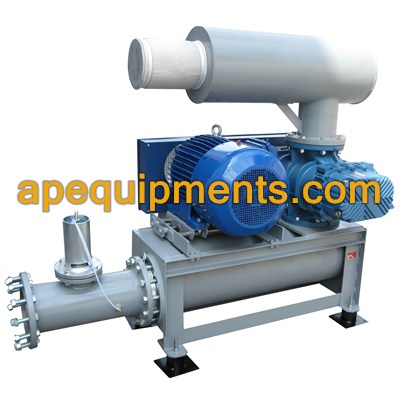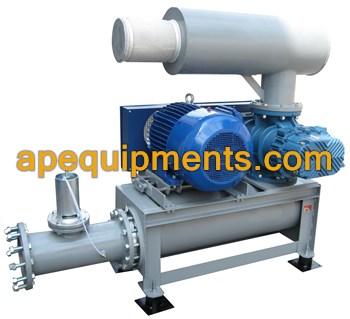
Airpol Roots-type blowers
Airpol Roots-type blowers are widely used wherever relatively large capacity combined with low compression ratio is needed. Blowers application scope is the volume of intake air from 35 to 25,000 m3/h, working overpressure up to 1.0 bar and working vacuum up to 0.5 bar.
They are used mainly in:
- aeration systems in municipal and industrial wastewater treatment plants,
- water treatment plants,
- power industry: ash handling,
- bulk materials transport systems,
- dust extraction systems,
- food industry: drying and vacuum packing,
- gas recirculation systems for supplying air for combustion processes.
- chemical and pharmaceutical industry: transport and distribution of granules.

Operation principle
Operation of Roots blowers is based on the cooperation of two symmetrical three-wing rotors which rotate in opposite directions. The drive shaft, where one of the rotors is mounted, drives by a gear reducer the shaft of the second rotor, which ensures synchronized and non-contact rotor operation.
When the drive shaft rotates, a predetermined volume of air is trapped between the housing and the rotors, and passes from the suction side to the discharge side of the blower. At one complete revolution of the drive shaft, the blower transports six volumes of air. While one of the volumes trapped between the rotors is filled with air, the other one is connected with a port through which air is pushed and compressed.
The blower adjusts to the counterpressure present in the receiving system. The volume flow varies slightly with pressure changes in the system, the load torque at equal pressure is constant, and the efficiency is proportional to the number of rotors revolutions.




